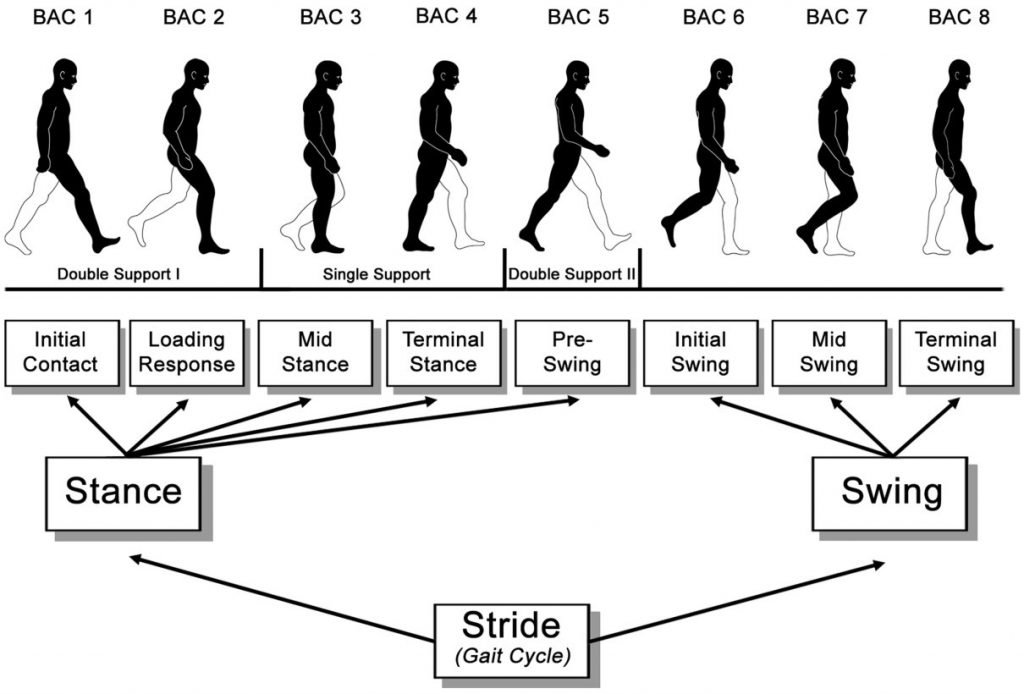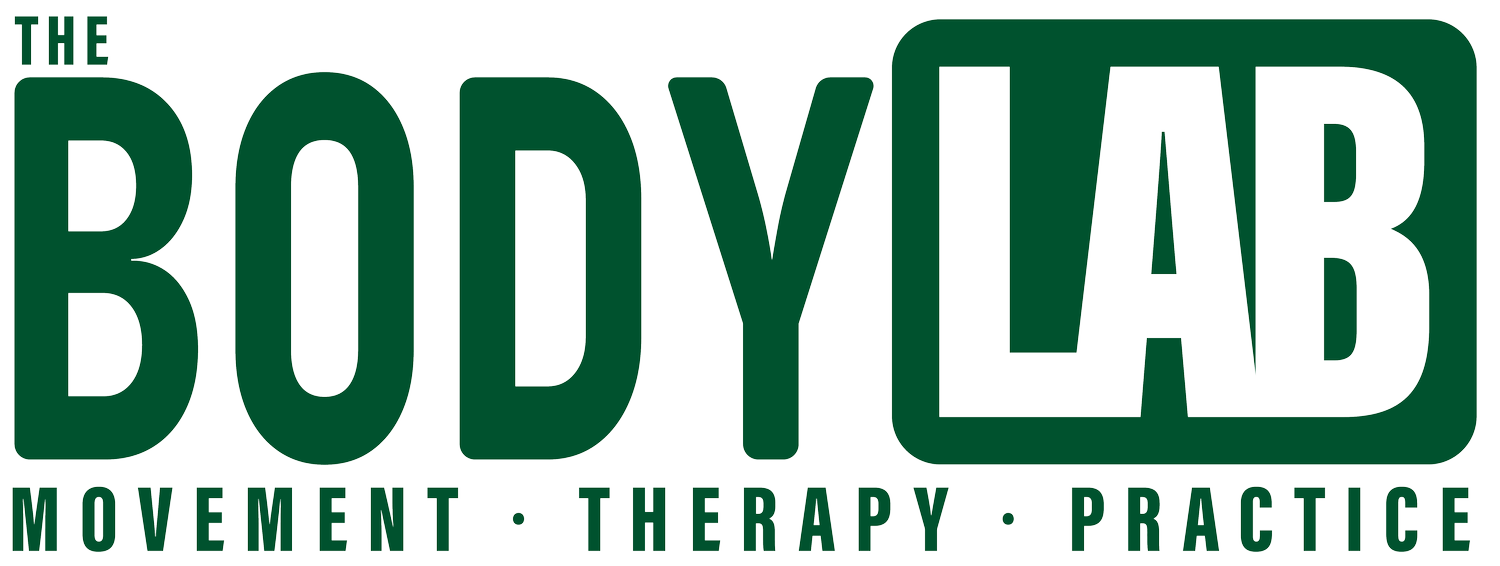
Walking Gait : The Details
Walking Gait Analysis Basic
Gait analysis is the study of how human’s walk to get from one location to another. In order to understand and analyse how someone walks, it is necessary to describe the predictable motion that the joints of the body allow to occur. This predictable cycle of events is called the gait cycle.
I measure a single gait cycle as a measured from one foot strike to the subsequent foot strike of the same foot. Easy measurable and a cycle that can be seen and felt as you walk.
Two Primary Actions in the Gait Cycle
The gait cycle can be broken down into two primary actions, the stance and swing phases, which alternate for each lower limb.
Stance phase: Consists of the entire time that a foot is on the ground.
Swing phase: Consists of the entire time that the foot is in the air.
As you walk, measurements can be taken of the timings of certain key events of each foot as it makes contact on the ground to when the foot moves through its cycle to make contact to the ground again. Comparisons can be made to each foot at certain times in the cycle and the relative motion and position of the body at each phase..
Perry & Burnfield 2010 (Gait Analysis: Normal and Pathological Function) have set the standard to measurement gait to certain parameters and have encompassed eight phases that capture the single leg and double leg support as the leg moves through the stance and swing phase of motion during the gait cycle. View the coloured limb in motion.
1. Weight acceptance (0-12%):
The objectives of weight acceptance are to prepare body for base of support (centre of mass change) shift from the back foot to the supporting front limb, absorb shock from the mass moving forward and maintain momentum of the body moving forward. This phase can be broken down further into initial contact (heel strike) and loading response.
Initial contact (heel strike) consists of the first 3% of the gait cycle. In typical gait, the heel strikes the ground at the most backward (posterior) and outside (lateral) contact of the heel and initiates the rotation over the heel to an accepting flat foot to preserve momentum.
Loading response goes from 3-12% of the gait cycle. In this portion, mass is coming over the foot which allows the knee to flexes slightly in order to absorb shock. The foot lengthens and spreads as the foot further flattens on the ground, stabilizing the limb and eccentrically loading most foot muscles.
2. Single limb support (12-50%):
Single limb support involves momentum of the body over the front foot and weight-bearing stability of the mass over its base of support. The entire body rest over one foot and returns to brief moment of neutrality of the entire skeleton. This phase can be broken down further into midstance and terminal stance.
Midstance, which is seen during the 12-31% of the gait cycle. During midstance, the shank straightens to allow the forward momentum over the supporting foot and allows the body to return to a neutral stance. Preparing the limb and mass of the body to find a new base of support.
Terminal stance which goes from 31-50% of the gait cycle. During terminal stance, the center of mass advances out in front of the supporting foot. The heel raises of the ground with two points of contact as momentum allows the ball of the foot to accept weight.
3. Swing phase (50-100%):
The objectives of the swing phase of gait
Forward momentum of the limb
Preparation of limb for stance
Upper body to receive the momentum of the lower limbs
The swing phase can be broken down into 4 sub-phases.
The swing phase can be broken down into 4 sub-phases.
Pre-swing takes place during 50-62% of the gait cycle. Pre-swing is the transition phase between stance and swing, in which the foot is contracting to push and lifted off of the ground.
Initial swing goes from 62-75% of the gait cycle. During initial swing, the hip, knee, and ankle are extended and start to flex to begin advancement of the limb forward and create clearance of the foot over the ground.
Mid-swing goes from 75-87% of the gait cycle. During mid-swing, limb advancement continues and the thigh reaches its most flexed position.
Terminal swing is the final phase of the gait cycle going from 87-100% of the cycle. During terminal swing, the final momentum of the limb takes place and the foot is positioned for initial foot contact to start the next gait cycle.




